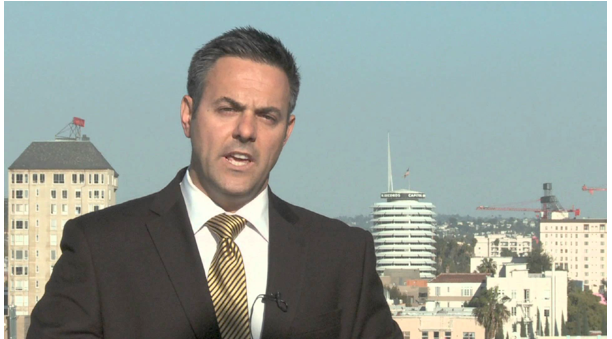President Wesson: LA’s Fabricator-in-Chief
@THEGUSSREPORT-Herb Wesson, the current LA City Council president (and former Speaker of the California State Assembly), forgot the adage always tell the truth because it’s the easiest thing to remember.
This much we know. Herb Wesson lied repeatedly about where he lived. He voted where he should not have voted, went out of his way to do so, may have illegally run for office where he did not reside, and he did it for personal gain. And many if not most of these lies may have been committed under the penalty of perjury.
We already know that Wesson is inclined to mislead the public about his recently exposed financial and housing problems. In the LA Times’ August 17 follow-up to my August 9 CityWatch article, Wesson (through his media flack) falsely stated that his personal problems date back to the 2007 purchase of his current home, which cost $759,999. As subsequently exposed, Wesson’s problems date back to the 1980s. And that house cost 25% more than he said: $950,000, according to public records, a pointless lie unless it was done to protect a bruised ego.
So on to Wesson’s purposeful lies.
Wesson had three curious real estate transactions on the same day, November 24, 1993. On that Wednesday, he and his wife Fabian purchased a $425,000 house in Ladera Heights, an unincorporated section of Los Angeles County. The Wessons also defaulted on their then-residence in Culver City which sold that day at a tremendous loss to them. They purchased it in the late 1980s for $153,000, sold it for just $60,000 (a 61% loss) and the buyer walked away with a hefty payday a little more than a year later after selling it for $168,500 (a 180% profit).
Exactly how the Wessons defaulted on a mortgage on the same day they bought a house that cost 700% more is anyone’s guess and might be revealed on their loan documents. But only the District Attorney or FBI can access those records, and they should.
What matters just as much is who bought that Culver City house, and Wesson’s ongoing relationship to that address from that date in 1993 all the way to June 14, 2005 when his voter registration changed, because Wesson continued to certify under penalty of perjury that the Culver City house was his legal residence during that entire time. This span encompasses his six years in the California Assembly, including two as its Speaker. If anyone in the state is familiar with the nuances of voting districts, it is the Speaker, and there is zero chance that Wesson did not know he was voting where he did not live, and that doing so is a crime.
If Wesson were to claim that he sold the Culver City house but remained there as a tenant, it would mean that he lived apart from his wife and young sons for those 11 years, 6 months and 21 days when his voter registration changed on June 14, 2005.
But if Wesson were to make such a claim, he would be lying again.
After the Wessons sold their Culver City house, Fabian soon changed her voter registration to the address of their newly purchase home in Ladera Heights. She was registered there, as were two of their sons (their other two sons do not appear to have ever registered to vote in LA County) while her husband remained registered to vote at the house in Culver City. Since both are affidavits, they are signed as follows: “I certify under penalty of perjury under the laws of the State of California, that the information on this affidavit is true and correct. WARNING: Perjury is punishable by imprisonment in state prison for two, three or four years.”
The Wesson who committed perjury was not Fabian. It was Herb.
On Wesson’s subsequent voter registration affidavit, signed by him June 2, 2005 (made official on June 14,) in the section where he stated his previous address, Herb Wesson asserted that his previous address was the house they bought in Ladera Heights on that date in 1993….an address at which he never registered to vote. In writing that, Wesson confirmed that he falsely and deliberately continued to vote using the Culver City address that he sold 11½ years earlier.
Unless you believe that the Speaker of the California Assembly did not know he was voting using an address that was different than that to which his wife was registered, he broke the law each and every election in which he voted.
Wesson also utilized a post office box in Culver City during his campaign for the Assembly. What the District Attorney and FBI may want to explore is what is the physical address listed on the USPS box card for it because putting false information there would be a big federal problem, as well.
When I reached out to the Press Office of California Secretary of State Alex Padilla for the definition of residency, they responded quickly with it. But they ceased all communication with me when I subsequently requested copies of Wesson’s Assembly campaign documents and certification on whether Wesson’s Culver City or Ladera Heights addresses were redistricted out of the territory Wesson represented and, in particular, just prior to his Speaker ascendency. (Padilla is part of the LA City Council presidency clique. He served in that capacity from 2001 to 2006, preceding Eric Garcetti who held that position from 2006 to 2012, when Wesson took it over, holding it to this day.)
None of these residency shenanigans come as a surprise. Wesson’s former colleagues, California Assemblyman Roderick Wright, LA City Councilmember Richard Alarcon and his former bosses LA County Supervisor Yvonne Burke and LA City Councilmember Nate Holden all found themselves in varying degrees of hot water and/or legal jeopardy for allegedly living outside of the area each represented.
And this was not the only time Wesson played a curious shell game with his residency.
In 2005 when LA City Councilmember Martin Ludlow shockingly left that job after only two years into his first term (and soon thereafter became a felon) Wesson needed to quickly establish residency within the City of Los Angeles and its Council District 10.
And did he ever scramble….
To be continued.
(Daniel Guss, MBA, is a writer who contributes to CityWatch, Huffington Post and KFI AM-640. He blogs on humane issues at http://ericgarcetti.blogspot.com/ . Follow him on Twitter @TheGussReport. Views he expresses here are not necessarily those of CityWatch.) Prepped for CityWatch by Linda Abrams.




 In the case of Tyre King (photo left), as well as in the cases of almost all police shootings of late, there was a belief on the part of the shooting officer that the suspect was armed. Once that belief took hold, drawing a Taser would have been inappropriate. So in precisely the circumstances when police shootings occur, Tasers are not even close to being the right weapon to draw.
In the case of Tyre King (photo left), as well as in the cases of almost all police shootings of late, there was a belief on the part of the shooting officer that the suspect was armed. Once that belief took hold, drawing a Taser would have been inappropriate. So in precisely the circumstances when police shootings occur, Tasers are not even close to being the right weapon to draw. 

 So far so good. But one critical element appears to be missing from all the preparations.
So far so good. But one critical element appears to be missing from all the preparations. 
 The city has approved a Tenant Habitability Plan (THP) that allows the developer to knock down existing garages and laundry rooms and remove 138 mature trees to make room for new utility lines to upgrade electricity for future tenants so the landlord may install in-unit washer/dryer and dishwashers, amenities that will not be offered to existing tenants.
The city has approved a Tenant Habitability Plan (THP) that allows the developer to knock down existing garages and laundry rooms and remove 138 mature trees to make room for new utility lines to upgrade electricity for future tenants so the landlord may install in-unit washer/dryer and dishwashers, amenities that will not be offered to existing tenants.  The law mandates disclosure of hazardous materials; leaving out information or lying on the THP form or in testimony is a misdemeanor. Tenant activists have been appealing to Councilmember David Ryu to forward the THP to the City Attorney for investigation.
The law mandates disclosure of hazardous materials; leaving out information or lying on the THP form or in testimony is a misdemeanor. Tenant activists have been appealing to Councilmember David Ryu to forward the THP to the City Attorney for investigation. 






 he discussion of cutting City Council pay by half.
he discussion of cutting City Council pay by half. 


 In their letter addressed to President Barack Obama and Education Secretary John King Jr. posted online Wednesday, the former students write that they are taking part in the "debt strike," which is organized by Debt Collective, to "begin to collect on your obligation to erase [the debts]."
In their letter addressed to President Barack Obama and Education Secretary John King Jr. posted online Wednesday, the former students write that they are taking part in the "debt strike," which is organized by Debt Collective, to "begin to collect on your obligation to erase [the debts]."
 We've been thrilled by surprise endorsements from film stars Leonard DiCaprio, Kirsten Dunst, Garrett Hedlund, Chris Pine, Joaquin Phoenix and Chloe Sevigny, who are watching attempts by developers to transform such wonderfully livable areas as Silver Lake, Echo Park, Los Feliz and Studio City — all at risk of becoming the next Hollywood, California's most richly historic district that is now being methodically destroyed by the City Council to make way for skyscrapers.
We've been thrilled by surprise endorsements from film stars Leonard DiCaprio, Kirsten Dunst, Garrett Hedlund, Chris Pine, Joaquin Phoenix and Chloe Sevigny, who are watching attempts by developers to transform such wonderfully livable areas as Silver Lake, Echo Park, Los Feliz and Studio City — all at risk of becoming the next Hollywood, California's most richly historic district that is now being methodically destroyed by the City Council to make way for skyscrapers. 



 Assemblywoman Lopez’ focus on the needless loss of affordable housing is allegedly shared by the Mayor, Councilmember Krekorian and the LA City Council in general which declared homelessness to be a crisis. That is all propaganda PR for the March 2017 re-elections. All the units which Raffi Shirinian’s Urban Blox will destroy are rent-controlled units and none of the new units are affordable. However, the behind-the-scenes secret dealings with politicos to push through Raffi Shirinian’s Urban Blox destruction of affordable homes is more nefarious.
Assemblywoman Lopez’ focus on the needless loss of affordable housing is allegedly shared by the Mayor, Councilmember Krekorian and the LA City Council in general which declared homelessness to be a crisis. That is all propaganda PR for the March 2017 re-elections. All the units which Raffi Shirinian’s Urban Blox will destroy are rent-controlled units and none of the new units are affordable. However, the behind-the-scenes secret dealings with politicos to push through Raffi Shirinian’s Urban Blox destruction of affordable homes is more nefarious.  Weddington Street (photo left) sits between Shirinian’s south side of Weddington and the parcel to the north. Weddington Street is 60 feet wide. That means that without Krekorian’s ripping out all of Weddington Street’s 14,070 square feet and giving all that land to his buddy Raffi Shirinian, there is no viable project.
Weddington Street (photo left) sits between Shirinian’s south side of Weddington and the parcel to the north. Weddington Street is 60 feet wide. That means that without Krekorian’s ripping out all of Weddington Street’s 14,070 square feet and giving all that land to his buddy Raffi Shirinian, there is no viable project. 










